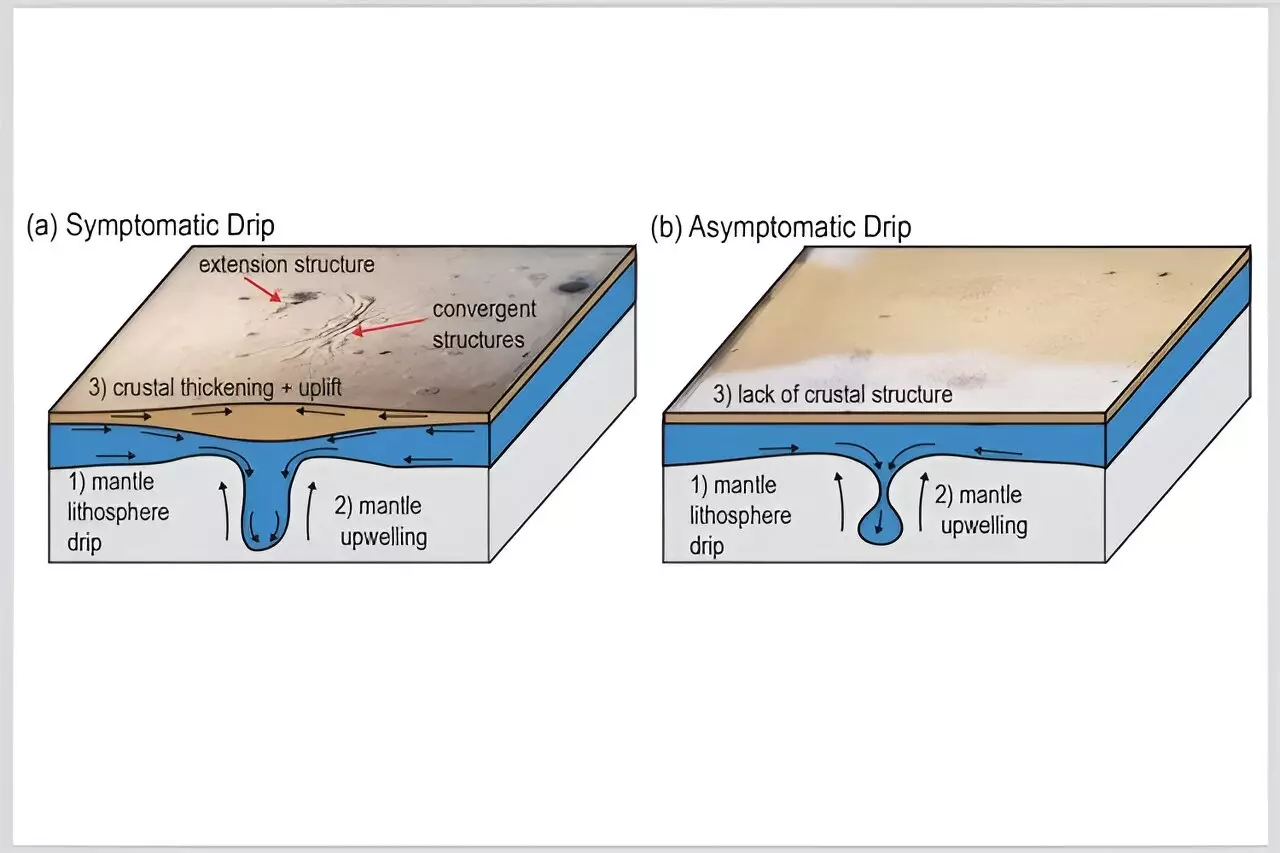The earth beneath our feet is in a constant state of flux, reshaping landscapes and initiating geological phenomena that have profound implications, not just for our planet, but also for celestial bodies beyond Earth. A pivotal study conducted by Earth scientists at the University of Toronto has shed light on the mysterious behavior of the Konya Basin located in Türkiye’s Central Anatolian Plateau. Utilizing a unique combination of satellite data, experimental simulations, and extensive geological research, the team has unveiled intriguing mechanisms driving the basin’s slow yet consistent subsidence amidst a rising plateau.
The Basis of the Study: Unraveling Geological Mysteries
At the core of this investigation lies lithospheric dripping, a term that encapsulates the complex behavior of Earth’s crust and upper mantle as dense rock fragments detach and sink into the underlying mantle. This natural phenomenon can lead to significant geological transformations, including the creation of basins and the uplifting of mountainous terrains—a characteristic not just observed on Earth, but potentially applicable to other planets like Mars and Venus. According to Julia Andersen, the lead author and a doctoral candidate, the initial observations from satellite imagery indicated a distinct circular feature indicative of subsidence within the Konya Basin, pushing the research team to delve deeper into subsurface anomalies.
The research team discovered a seismic anomaly in the upper mantle coupled with a thickened crust in the area, pointing to substantial high-density material below the surface. Such findings were pivotal, illuminating how the lithospheric dripping process operates and how it has sculpted the physical landscape over millions of years. Additionally, the researchers drew parallels with prior investigations into the Arizaro Basin in the Andes—suggesting that these geological processes might be universally applicable across diverse terrestrial regions.
This study brings to light critical connections between the ongoing uplift of the Central Anatolian Plateau and the subsidence occurring in the Konya Basin. Findings suggest that as segments of the lithosphere experience the dripping phenomenon, it results in immediate and long-term geological changes, including the formation of depressions on the surface. Russell Pysklywec, a co-author and knowledgeable geoscientist, elaborated on the multi-stage nature of these processes—remarking that initial drips may precipitate further subsurface activities, leading to a series of related geological events.
Interestingly, the research found that subsidence and uplift can occur simultaneously—a phenomenon that challenges traditional understandings of tectonic activity. Instead of being perceived as isolated incidents, it appears that these processes are interlinked, facilitating dynamic changes within the Earth’s crust. Andersen’s assertion that “subsidence is occurring alongside the ongoing uplifting of the plateau” emphasizes the need for an evolved perspective regarding how geological transformations manifest in regions like the Konya Basin.
Laboratory Experiments: Simulating the Earth’s Dynamics
To validate their findings, the research team employed innovative laboratory simulations that mimicked the Earth’s lithospheric dynamics. Their methodology involved constructing a structured model that replicated the behavior of the mantle and crust under the influence of gravitational forces. The experiments were intricately designed, using materials that exhibited properties similar to Earth’s layers, allowing the researchers to observe the dripping phenomenon in real-time.
The systematic observation captured in high-resolution images showcased the dripping events and their impact—or lack thereof—on the surface. The primary and subsequent secondary drips were closely monitored, revealing how even smaller drips could induce localized subsidence without horizontal displacement of the crust above. This meticulous analysis underscores the complex interplay between vertical and horizontal forces within geological systems, illuminating previously misunderstood aspects of lithospheric behavior.
The research implies significant potential for understanding tectonic processes not only on Earth but also on other celestial bodies with distinct geological characteristics. The mechanisms of lithospheric dripping and cryptic subsidence could be crucial in assessing planetary health and forecasting geological events, offering a new lens through which scientists can study extraterrestrial geological phenomena.
As Earth scientists continue to explore and uncover the underlying mechanics driving such processes, the significance of these findings will resonate through various fields, ranging from geology to planetary science. The Konya Basin study exemplifies a step forward in unraveling Earth’s complexities, underscoring the interconnectedness of various geological processes and expanding our understanding of how planetary surfaces are sculpted continuously.
The dynamic evolution of the Konya Basin not only enriches local geological narratives but also broadens the horizon of knowledge regarding the forces that shape planetary bodies. This study serves as a reminder of the ever-unfolding story of our Earth—a narrative that continues to captivate and inspire future research.



Leave a Reply